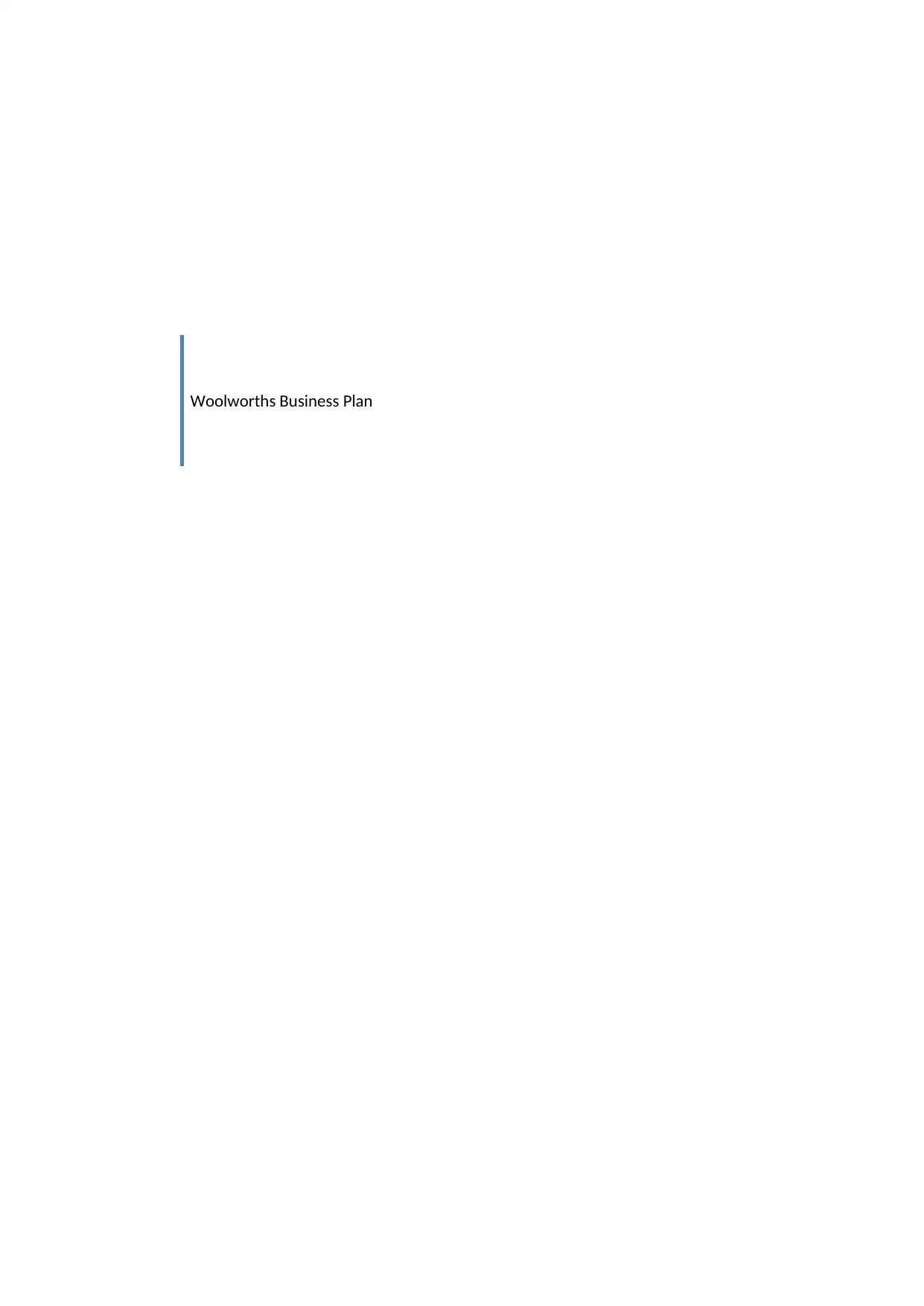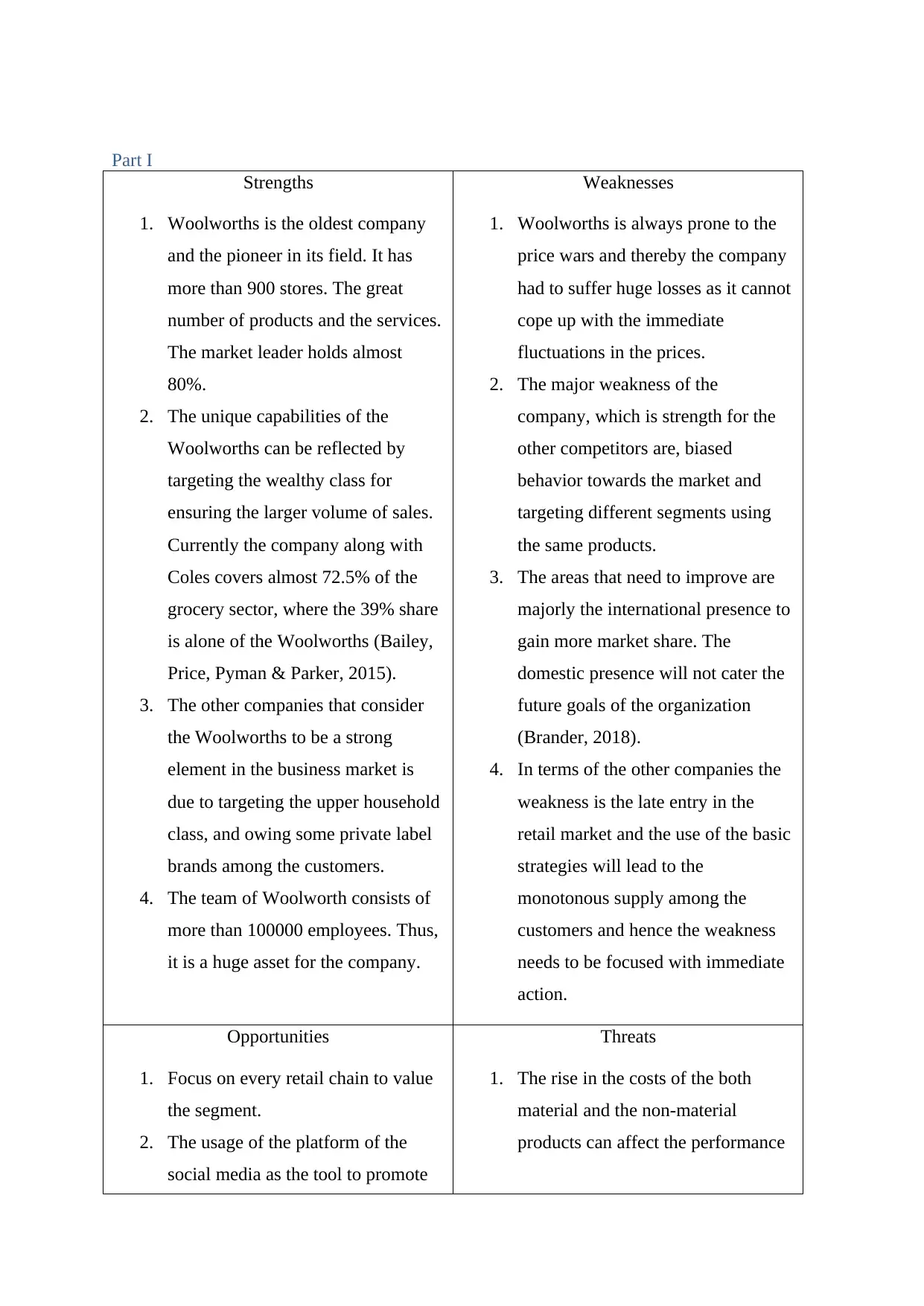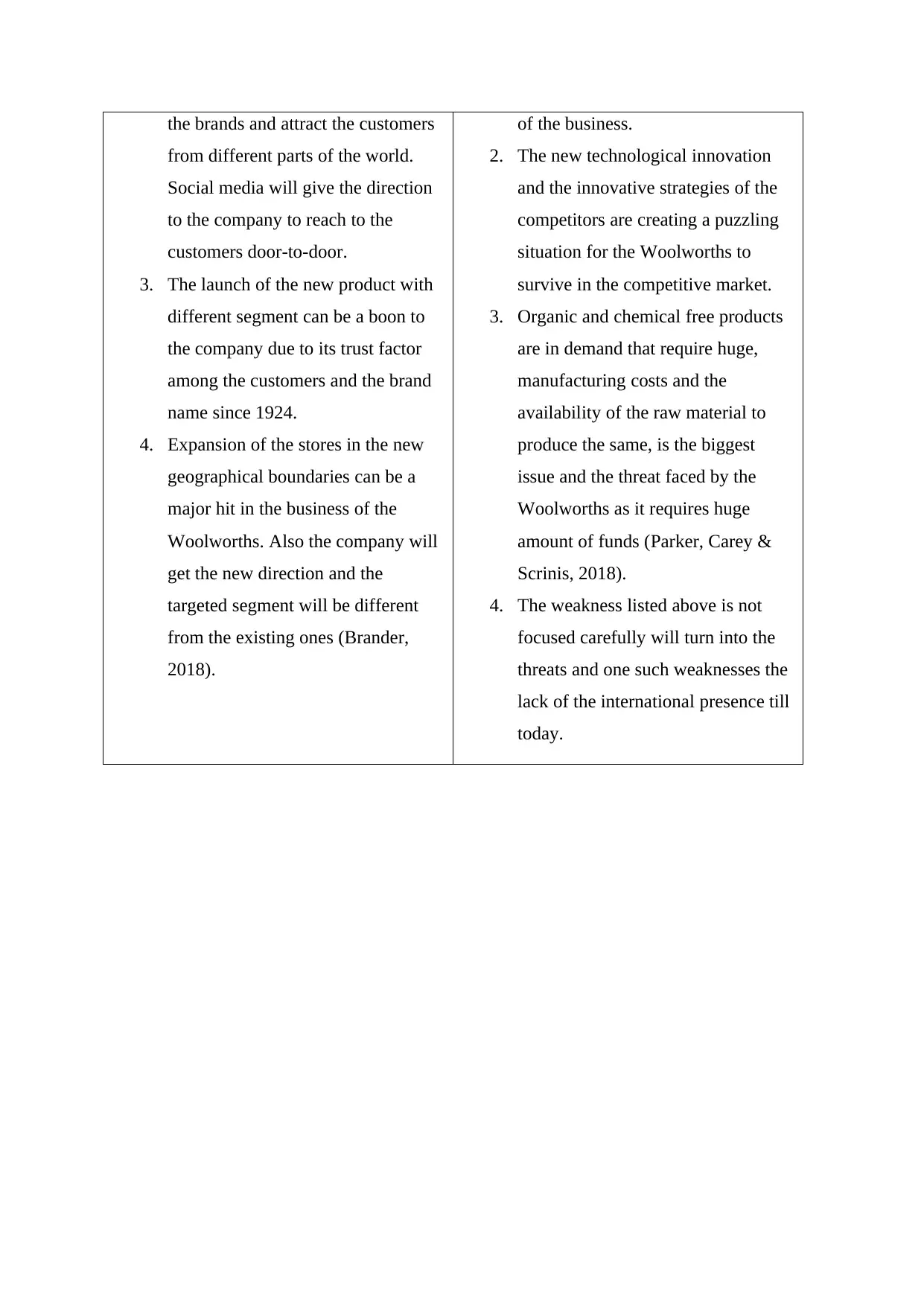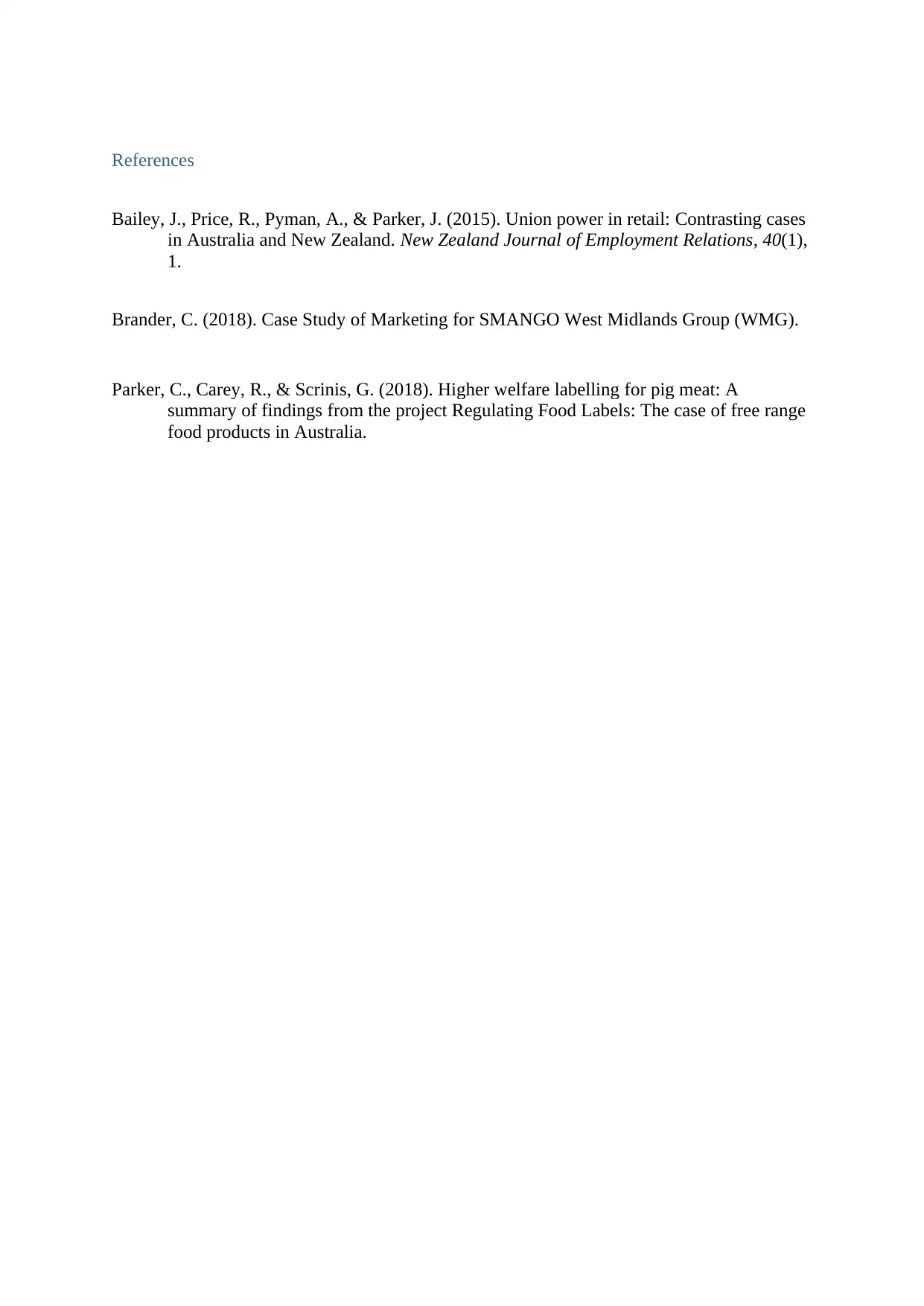Woolworths Business Plan Case Study: Detailed SWOT Analysis
VerifiedAdded on 2023/04/25
|4
|702
|281
Case Study
AI Summary
This case study provides a SWOT analysis of Woolworths' business plan, examining its strengths, weaknesses, opportunities, and threats. Woolworths, as the oldest company in its field with over 900 stores, possesses strengths such as market leadership and a large employee base. However, it faces weaknesses including vulnerability to price wars, biased targeting of wealthier customers, and a late entry into the retail market. Opportunities lie in focusing on every retail chain, leveraging social media for promotion, launching new products, and expanding geographically. Threats include rising costs, technological innovations by competitors, demand for organic products, and the risk of unaddressed weaknesses hindering international expansion. The analysis references various studies to support its findings, highlighting the need for Woolworths to adapt to evolving market conditions and competitive pressures.
1 out of 4











![[object Object]](/_next/static/media/star-bottom.7253800d.svg)